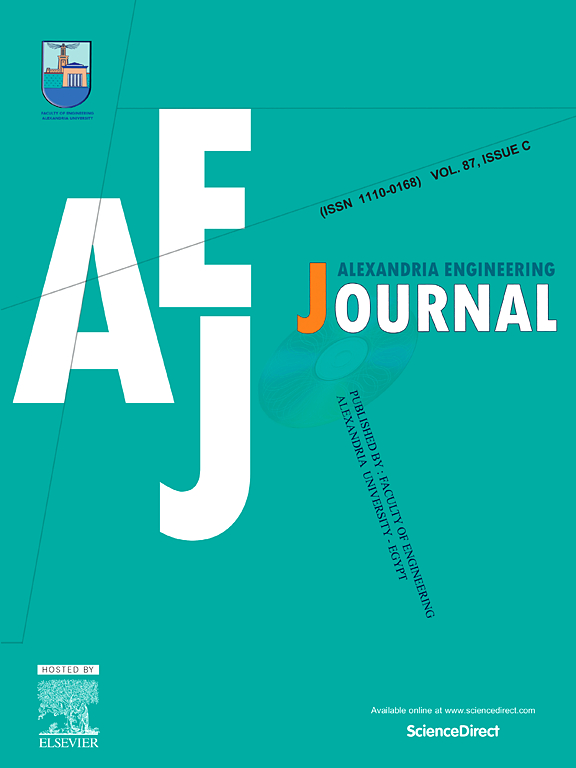Accuracy assessment of the 2D laminar boundary layer on a flat plate in an immersed boundary-Fourier pseudospectral simulations
IF 6.2
2区 工程技术
Q1 ENGINEERING, MULTIDISCIPLINARY
引用次数: 0
Abstract
We investigate the accuracy of the laminar boundary layer on a flat plate by an immersed boundary — Fourier pseudospectral methods denominated as (IMERSPEC). The IMERSPEC solves the continuity equation and linear momentum equations numerically implementing the Pseudospectral Fourier Method (PFM) with the Fast Fourier Transform (FFT) algorithm. The reduced computational cost is achieved by the use of FFT as well as the pseudospectral approach which does not solve the convolution product of the advective term. Furthermore, the mathematical process of pressure projection replaces the solution of Poisson Equation while simultaneously ensures mass balance and decouples the pressure from the computational solution. The simulations of the laminar boundary layer at the Reynolds number of are performed using IMERSPEC and modelling the behaviour of the flow after the flat plate’s leading edge. To obtain reasonably accurate results such that the maximum error from the friction coefficient distribution obtained is less than 4% over the useful domain we use at least a uniform mesh with 1024 × 256 collocation points. The rightness showed in these results indicates far improvement from the usual finite volume method’s modelling which needs a local refinement mesh with far more volumes to present comparable results.
求助全文
约1分钟内获得全文
求助全文
来源期刊

alexandria engineering journal
Engineering-General Engineering
CiteScore
11.20
自引率
4.40%
发文量
1015
审稿时长
43 days
期刊介绍:
Alexandria Engineering Journal is an international journal devoted to publishing high quality papers in the field of engineering and applied science. Alexandria Engineering Journal is cited in the Engineering Information Services (EIS) and the Chemical Abstracts (CA). The papers published in Alexandria Engineering Journal are grouped into five sections, according to the following classification:
• Mechanical, Production, Marine and Textile Engineering
• Electrical Engineering, Computer Science and Nuclear Engineering
• Civil and Architecture Engineering
• Chemical Engineering and Applied Sciences
• Environmental Engineering
 求助内容:
求助内容: 应助结果提醒方式:
应助结果提醒方式:


